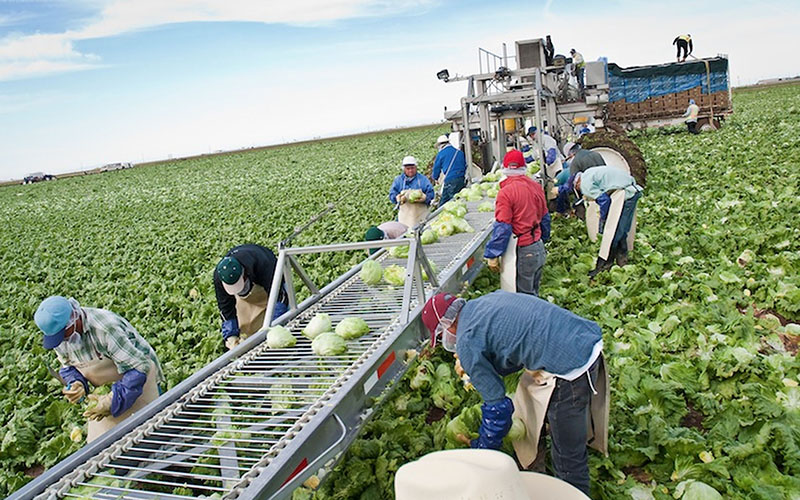WASHINGTON – The number of H-2A visas issued to agricultural workers in Arizona has more than doubled in the past five years, mirroring a national increase in the temporary “guest worker program” for noncitizens.
The Department of Labor certified 5,391 H-2A workers in the state in fiscal 2016 compared to just 2,110 that were certified in fiscal 2011, according to department data. Nationally, the number jumped from 77,246 workers to 165,741 in the same period.
Farmers say the workers are vital to their operations and that the program is working well and providing a badly needed source of labor. But labor advocates say the visa program is growing for all the wrong reasons: Keeping wages low and workers powerless.
The H-2A program is for seasonal workers, generally for a period of 10 months or less, to provide farms with “short-term agricultural labor when the number of available domestic workers is insufficient.”
Employers who want to hire workers on H-2A visas first have to apply with the Labor Department, which looks to make sure there are not enough able U.S. workers to fill the jobs and to make sure hiring foreign workers won’t hurt wages or working conditions for U.S. workers. If OK’d by the Labor Department, the employer then applies with Customs and Immigration Services for the visas, which workers can apply for in their home countries.
Bruce Goldstein, the president of Farmworker Justice, said one of the biggest problems with the program from the worker’s point of view is that “the grower controls the visa.”
“It is often a way to control the labor force and suppress improvement in wages and working conditions,” Goldstein said. He said the visa program is expanding because it is a “relief valve” for farmers to find cheap labor outside the United States.
“If the worker wants to come back following the next season, they have to hope the employer applies for a visa, for that worker, for the next season,” Goldstein said.
But Thomas Hertz, an economist with the U.S. Department of Agriculture, said the H-2A program “is not the farm industry’s first choice.”
“Growers would like even more labor, because demand for fruits and veggies keeps growing, too,” Hertz said in a statement.
He said the farmworker visa program can be more costly for farmers, because of administrative expenses and because it requires that employers supply housing and transportation for any H-2A workers they hire.
But for Tanimura and Antle, a farm group that operates in Arizona and other states, the H-2A visa program “has been working really well.”
Tanimura and Antle Vice President Wesley Van Camp said the firm has been using H-2A visa workers for the past nine years to make up for a shortage of labor in the Yuma region, where it has farms.
For the past five years, Yuma has been in the top 10 cities in the U.S. for the number of H-2A positions certified by the federal government. In fiscal 2015, according to the Office of Foreign Labor Certification, the Yuma area was certified for 2,255 H-2A positions, fourth-highest in the nation.
Van Camp said the program has been helping the farm keep up with the “increasing demands for agriculture.”
“That’s why we turned to the H-2A because we couldn’t keep up,” Van Camp said.
But Goldstein believes U.S. farmers are going looking for cheaper workers overseas, not because they can’t fill vacancies here.
“The opportunity to work inside the United States, even at the lowest-paying jobs … can be enticing,” he said.
For that reason, Goldstein said he believes farmers will continue to apply and give out H-2A visas as long as the government keeps approving them.
“They should not be the model for this country,” he said of the visas. “This is a nation of immigrants, not a nation of guest workers.”
